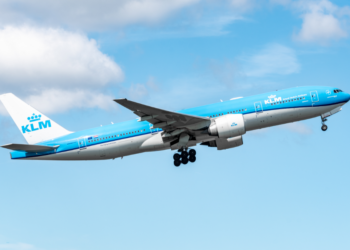Contrails behind aircraft contribute to global warming but new sustainable jet fuels may help reduce this environmental damage as well as reducing emissions
Aviation’s environmental impact is focused on reducing carbon-dioxide emissions but engineers say that non-CO2 aircraft emissions from sustainable aviation fuels (SAFs) could also account for as much as two-thirds of the industry’s contribution to climate change.
If this additional benefit is proven it is a huge step in slashing emissions by the airline industry, which has focused on reducing carbon dioxide emissions from jet fuel with a target of 65 per cent reduction already. This new research may prove SAFs also reduce the non-CO2 effects of flying.
A new Boeing ecoDemonstrator flight-test program has been revealed that will measure how sustainable aviation fuels (SAFs) affect non-CO2 emissions providing further data to previous studies which have suggested that cleaner-burning jet fuels could produce up to 70% fewer planet-warming contrails.
Contrails are formed in certain atmospheric conditions when water vapor from jet engines condenses and freezes around soot particles, leaving a trail that is visible from the ground. Over time, longer-lasting contrails can merge together to form heat-trapping contrail-cirrus clouds, which contribute to global warming.
Boeing announced earlier this month that it is working with NASA and United Airlines to test the effects of SAF on non-CO2 emissions, using an ecoDemonstrator Explorer 737-10 aircraft. The three-week campaign is being supported by the US Federal Aviation Administration (FAA), GE Aerospace and the German Aerospace Center (DLR).
The jet will fly with 100% SAF, provided by Paramount, California-based World Energy, in one tank and conventional jet fuel in the other. The SAF is derived from renewable biomass feedstocks, including agricultural waste, fats and oils.
The test aircraft will be followed by NASA’s DC-8 airborne science lab aircraft (pictured), which will measure emissions produced by each type of fuel and examine any resulting contrail ice particles. In addition, NASA satellites will capture images of contrail formation as part of the test.
“Flight testing is complex and resource-intensive, yet it’s the gold standard for understanding how sustainable aerospace innovations affect changes in contrails and climate,” says Rich Wahls, NASA mission integration manager for the Sustainable Flight National Partnership. “This is why we’re bringing NASA’s DC-8 to bear on this collaboration, where the valuable flight data will improve our predictive models.”
United’s chief sustainability officer, Lauren Riley, adds: “This collaboration between Boeing, NASA and United has the potential to not only help us better understand contrails, but to provide the full scope of what our transition to SAF can provide beyond greenhouse-gas reductions.”
Boeing and NASA have previously conducted ground testing of SAF emissions in 2021 on an Alaska Airlines 737-9 ecoDemonstrator and in 2022 on a 777-200ER ecoDemonstrator. The airframer says the data from these earlier tests confirmed that the use of paraffinic SAF yields “dramatic particle emission reductions”.
Read more on this story HERE
Read more Decarbonisation News HERE





